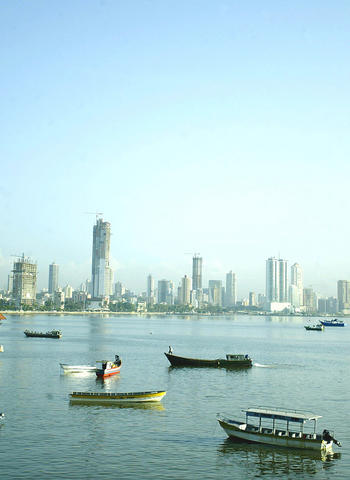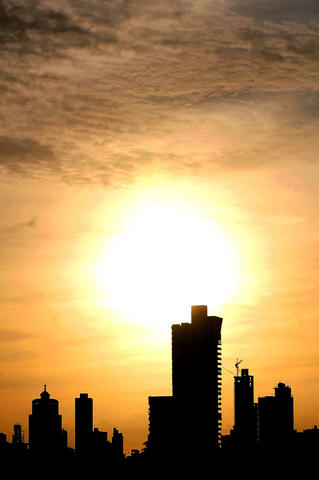"I don't get to travel as much as I'd like," says Xili, my guide in Panama City. "That's why I love meeting couch surfers. I feel like I'm traveling with them."
Born in Nicaragua but having spent 14 of her 26 years in Panama, she discovered couchsurfing.com just three months ago, becoming an instant convert to the concept of volunteering to host passing travelers. Although she can't follow the literal interpretation of having people sleeping on her couch ("My roommate doesn't understand"), she is happy to show just about anyone around the country's booming capital.
Panama City has been nicknamed the "Miami of the south" and the parallels are as glaring as the sunlight: waterside skyscrapers, palm-lined avenues, multicultural cuisine, mind-boggling commercialism ... but it was the tales of its pulsating nightlife that caught my attention. My travel-networking experiment across Central and South America got off to a great start in Ecuador, but I've yet to arrange a big night with a local.

If anyone was up for taking things up a notch, it was Xili, a hardworking, hard-playing lawyer. With her couchsurfing profile listing music, partying and dancing among her interests, I was sure she could show me a good time.
"I hope you're not planning to sleep tonight," she says with a grin, as we come face to face for the first time, having exchanged a series of e-mails. We've arranged to meet in Casco Viejo, the city's most up-and-coming neighborhood, where derelict colonial buildings are slowly being renovated and a creative undercurrent is bubbling.
What follows is an all-night tour of her favorite night spots. We start with Casco Viejo's La Casona de las Brujas (enlacasona.com, a live music venue with an open-air courtyard decked in fairylights) and Banos Publicos (Plaza Herrera's former public bathroom now hosting alternative rock bands). Then, in the early hours, we move on to the bright lights of Calle Uruguay, where minimalist S6IS satisfies Xili's craving for reggaeton, and the more mainstream rock venue Sahara fits the bill when she has a sudden "need for David Bowie."

Would I have found these places alone? Maybe. In such a short time frame? Unlikely. Xili's tour is the equivalent of a shot glass of pure liquor - it provides an instant hit of Panamanian nightlife, while the warm welcome from all her friends makes me feel right at home.
As for the nightlife itself, Calle Uruguay may be the country's much-hyped nightlife avenue, but, for me, it's the Casco Viejo venues - less commercial, more bohemian - that leave a lasting impression.
Getting back to my hostel just before dawn, an 8am start the next day is far from ideal, but I have prearranged a meet with my second Panama City contact, Gabriel from asmallworld.net.

ASW is one of a handful of invite-only travel networking sites (see also yacht6.com). How do you gain access to such a hallowed portal? Try asking around. A vague acquaintance - a self-confessed social-networking addict - helped get me through the door. (Although, if I fail to resist temptation to spam fellow members James Blunt and Naomi Campbell, I'll be out.)
ASW is undeniably elitist, nicknamed Snobster in reference to early social networking site Friendster. However, in my limited use, I've always met exceptions to the rule. Gabriel - a thirtysomething owner of an office supplies company and yoga teacher - is such an example: clearly well off, but down-to-earth, unassuming and very generous in his offer to let me join his out-of-town kitesurfing excursion.
Gabriel and friends spend every weekend camping out at Punta Chame, a little-known beach an hour and a half's drive from the city. "You just arrived in Panama and you're already at Punta Chame?" asks Amit, a fellow ASW member and kitesurfing addict, as I dip my toes in the Pacific for the first time. "You've certainly started at the top."

Jutting out on a peninsula, a clear day here offers views of the city and, when the tide is out, I have its expansive sands almost to myself, watching the kitesurfers crisscross the gentle waves. Later, as the wind subsides, we convene in the beach's only restaurant to refuel on fresh fish and patacones (thick slices of plantain, squashed and fried).
The surfers are a sociable bunch and I find myself leaving the beach with a collection of phone numbers. After just one week, I feel like I've already begun to establish a small social circle through Gabriel and Xili (who I see many more times). After receiving invites to group dinners, house parties, karaoke nights and even a gig in a rainforest, I become even more convinced that travel networking is the way forward.
I'm starting to feel Panama will be tough to leave, but, fortunately, I have one more week. Next up I'm planning to see the less glamorous side of the country in Colon with Xili, and meet Toyo, a travel-networking member of the Kuna tribe. "Amiga!" he writes, when I tell him I'm in the country. "Welcome to my home. See you next week."
Travel networking etiquette
* Keep it personal
* Contacting someone saying simply "Hello. Can I stay at your house for a week?" is unlikely to elicit a positive response. Introduce yourself and your plans. Where possible make the person feel you've chosen them for a reason.
* Always reply
* If you request to meet someone and they send a personal response to say they won't be able to make it, return the courtesy with a reply rather than just moving straight on to the next person. Communicate
* Keep to your plans. Don't leave your host waiting for you. Don't pull out at the last minute.
* Give a little
* If you're staying at someone's house, bring a gift (maybe something typical from your own country). If they're showing you around town, buy lunch or drinks if you can, and always pay your way.
* Be courteous
* If staying at someone's home, do not use it as a base to party with other people. Fit in with host's schedule. Don't sleep in for hours. Don't overstay your welcome.
* Make sure you spend time getting to know your host. If you're just after free accommodation or a tour guide, you've got the wrong idea.

Earlier this month, a Hong Kong ship, Shunxin-39, was identified as the ship that had cut telecom cables on the seabed north of Keelung. The ship, owned out of Hong Kong and variously described as registered in Cameroon (as Shunxin-39) and Tanzania (as Xinshun-39), was originally People’s Republic of China (PRC)-flagged, but changed registries in 2024, according to Maritime Executive magazine. The Financial Times published tracking data for the ship showing it crossing a number of undersea cables off northern Taiwan over the course of several days. The intent was clear. Shunxin-39, which according to the Taiwan Coast Guard was crewed

China’s military launched a record number of warplane incursions around Taiwan last year as it builds its ability to launch full-scale invasion, something a former chief of Taiwan’s armed forces said Beijing could be capable of within a decade. Analysts said China’s relentless harassment had taken a toll on Taiwan’s resources, but had failed to convince them to capitulate, largely because the threat of invasion was still an empty one, for now. Xi Jinping’s (習近平) determination to annex Taiwan under what the president terms “reunification” is no secret. He has publicly and stridently promised to bring it under Communist party (CCP) control,

On Sept. 27 last year, three climate activists were arrested for throwing soup over Sunflowers by Vincent van Gogh at London’s National Gallery. The Just Stop Oil protest landed on international front pages. But will the action help further the activists’ cause to end fossil fuels? Scientists are beginning to find answers to this question. The number of protests more than tripled between 2006 and 2020 and researchers are working out which tactics are most likely to change public opinion, influence voting behavior, change policy or even overthrow political regimes. “We are experiencing the largest wave of protests in documented history,” says

One way people in Taiwan can control how they are represented is through their choice of name. Culturally, it is not uncommon for people to choose their own names and change their identification cards and passports to reflect the change, though only recently was the right to use Indigenous names written using letters allowed. Reasons for changing a person’s name can vary widely, from wanting to sound more literary, to changing a poor choice made by their parents or, as 331 people did in March of 2021, to get free sushi by legally changing their name to include the two characters